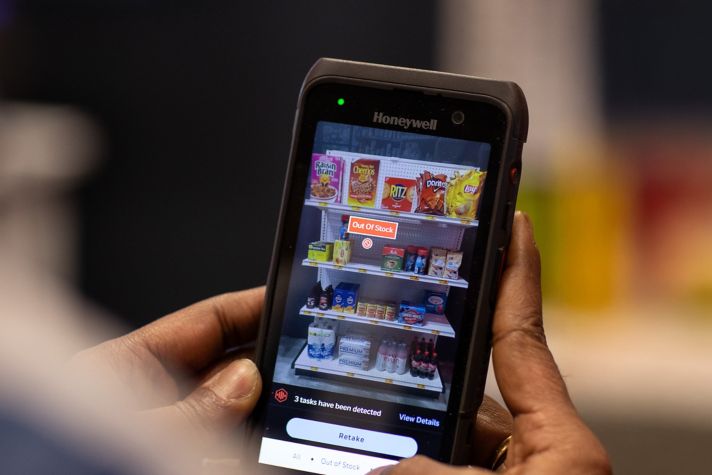-
Global
-
Africa
-
Asia Pacific
-
Europe
-
Latin America
-
Middle East
-
North America
- |
- BUSINESSES
- |
- Contact
- |
-
Global
-
Africa
-
Asia Pacific
-
Europe
-
Latin America
-
Middle East
-
North America
- |
- BUSINESSES
- |
- Contact
- |
You are browsing the product catalog for
You are viewing the overview and resources for
- News
- This Emerging Technology Can Keep Screens Steady in an Always-Moving World
This Emerging Technology Can Keep Screens Steady in an Always-Moving World
Learn about a new system being developed to improve user experience of everyday touchpoints.
You’re scrolling through your phone while a passenger in a car. Every bump in the road jolts your screen, forcing your eyes to constantly refocus. A sudden turn makes the words blur even more, and before long, you start feeling the strain.
Now, imagine if your screen adapted to the movement, keeping the text steady as if it were anchored in space. No more discomfort, just a smooth, effortless experience. That’s the idea behind Honeywell's Motion Stabilized Screen Technology.
A team of Honeywell Aerospace Technologies engineers initially explored this concept while researching augmented reality and advanced displays, where keeping information stable in motion is essential. By applying these principles to screens you use in your daily life, Honeywell's Motion Stabilized Screen Technology offers a way to make digital interactions more accessible, whether you’re trying to read a text in a crowded subway, exercising on a treadmill or having a video adjust to turbulence in an airplane.
A solution inspired by everyday challenges
Honeywell's Motion Stabilized Screen Technology wasn’t just an idea born in a lab but is rooted in real-life hurdles. Ken Leiphon, principal engineer saw a problem that many people encounter every day and realized how technology could help. His mother experiences hand tremors that can make it challenging to use a phone.
“I was so impressed with her persistence because both hands were shaking and she’s trying to type out this text. And I was just sitting there thinking, [what if] we could take some of that technology for our head-down monitor and apply that,” Leiphon said.
Looking to experience the effect firsthand, Leiphon ran a test while using his exercise bike. He found that by reducing constant motion blur, the technology appeared to help reduce eye strain and made his workouts more comfortable.
How the technology hits pause on unwanted motion
The technology/system detects movement and adjusts the screen in real time so that text and images stay clear. At its core, the product integrates an off-the-shelf display with a miniature inertial measurement unit (IMU). This sensor, similar to those found in VR and AR headsets, detects the slightest vibrations and movements, enabling an adjustment of the image position so that it remains fixed relative to your line of sight.
“The way that the correction works is we’re trying to create a window-like viewing experience,” Leiphon said.
It’s similar to how your eyes keep things steady when you look out a window. Even if you move around, what you see in the outside world remains in focus. Honeywell's Motion Stabilized Screen Technology uses the same idea, matching your movements in real time to cut down on nausea and strains, so screens feel easier to use and more comfortable in high-motion situations.
Where Honeywell's Motion Stabilized Screen Technology can make a difference
Researchers and engineers at Honeywell Aerospace Technologies see the vast potential of this solution. The benefits can be applied in multiple environments where screen movement makes reading, watching or interacting with content difficult.
Commuting: Whether you’re on a train, bus or in the backseat of a car, Honeywell's Motion Stabilized Screen Technology can help keep your display clear and readable.
Exercise equipment: Following a workout routine on a treadmill or exercise bike? The screen stays steady so you can stay focused.
Accessibility: For individuals with motor challenges, this technology makes touchscreens easier to use on all hand-held and mounted devices.
Work and learning: Think warehouses, hospitals or classrooms. Having a stable display means easier-to-read information in dynamic environments.
“Inclusive design isn’t just about meeting varied needs of users – it's a catalyst for innovation,” said Anni Lano, Honeywell’s Accessibility Program Director. “Honeywell's Motion Stabilized Screen Technology is a perfect example of how inclusive design drives innovation. By designing with accessibility at the forefront, we didn’t just create a tool that supports people with tremors — we are developing a solution that’s more intuitive, precise and user-friendly for all. Inclusive design pushes us to think beyond the average user and unlocks solutions that benefit a much broader audience."
This story is one example of how Honeywell and its All Abilities Employee Network are partnering to enhance inclusivity and accessibility in product design. Learn more about Honeywell's commitment to accessibility.
Copyright © 2025 Honeywell International Inc.




